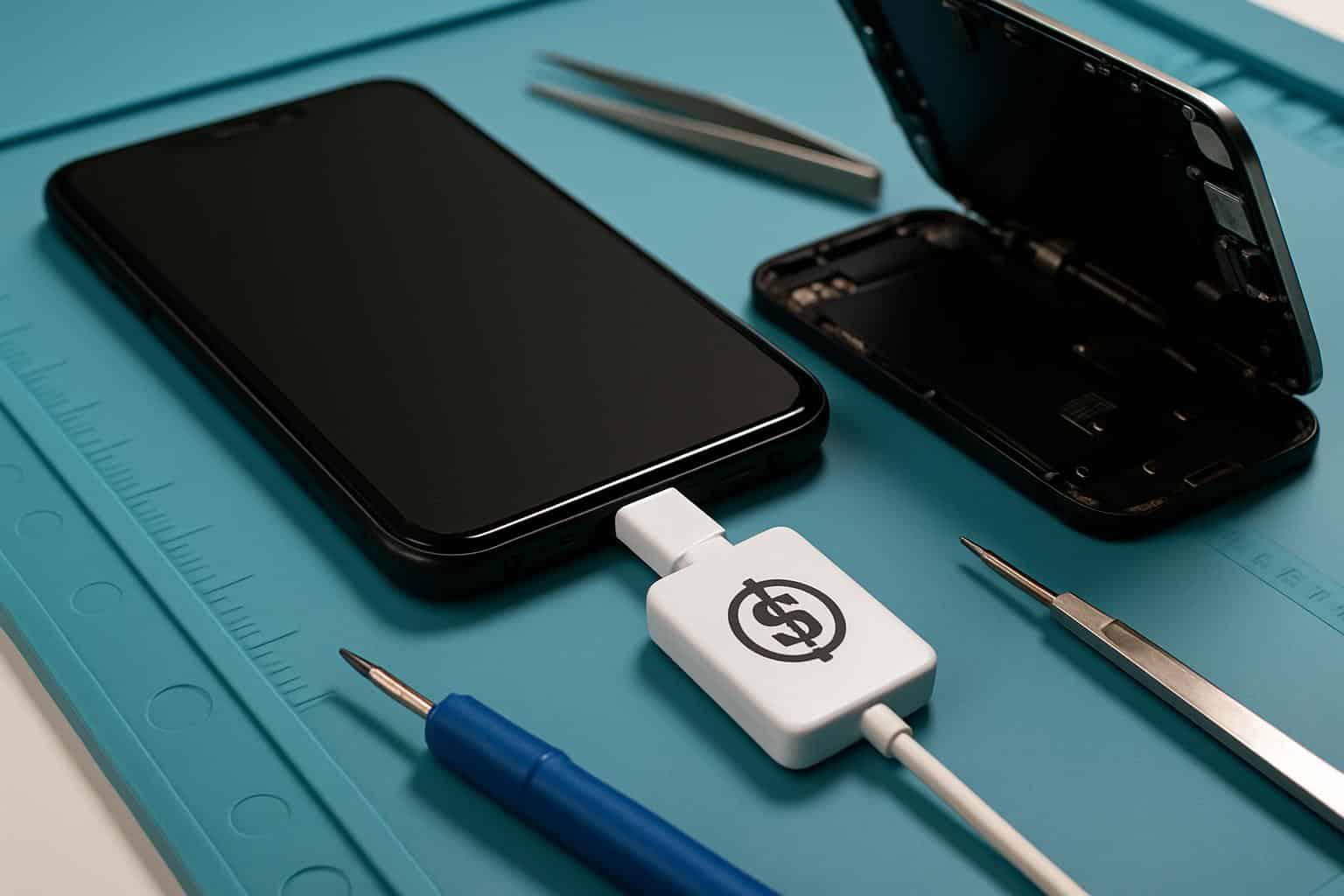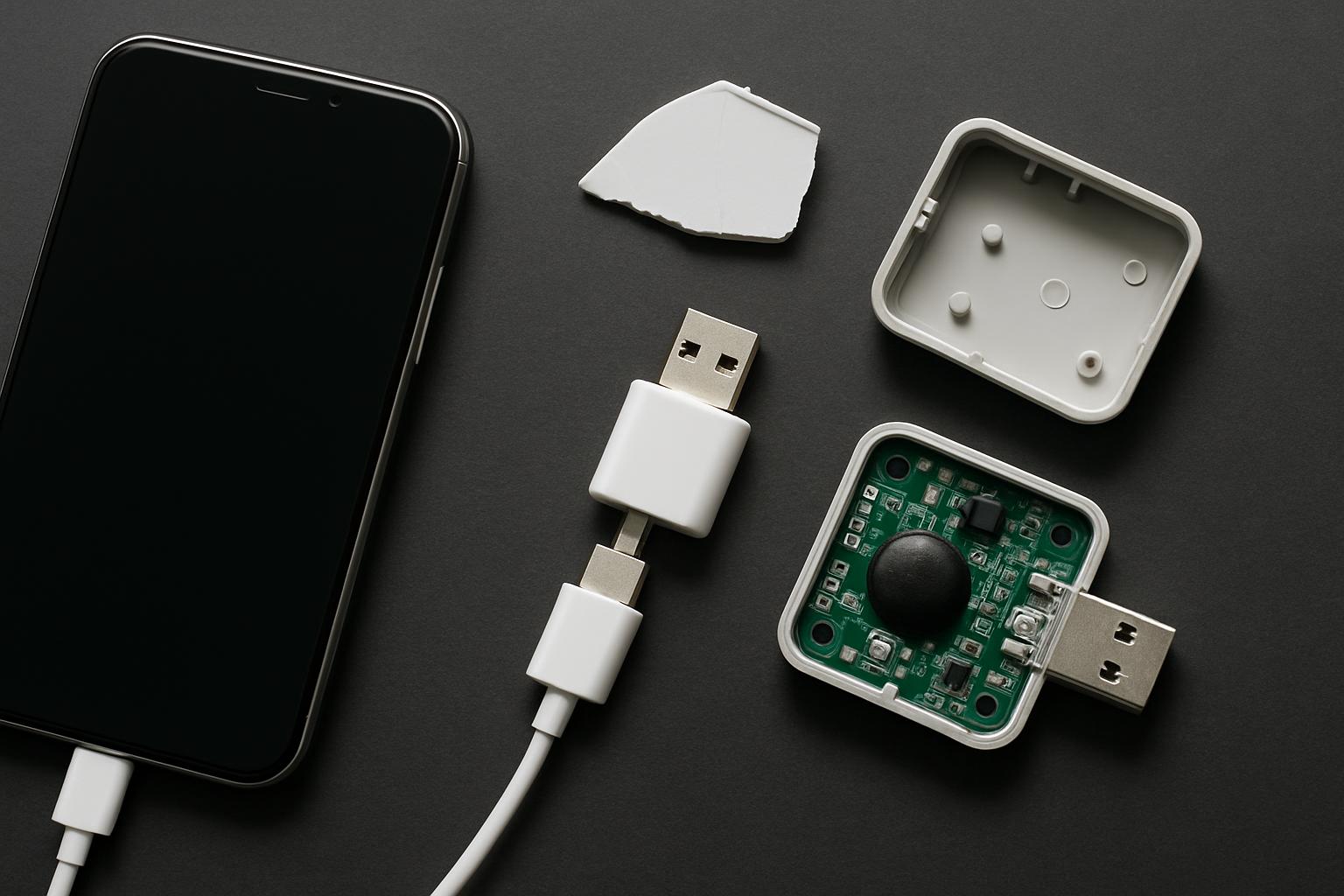A small USB device is promising it can “repair” your phone battery for the cost of a latte. I bought one, dissected it and put it through weeks of tests. The judgment is plain: It doesn’t fix anything, because there’s nothing in there to do the fixing.
What This $5 Dongle Claims to Repair and Optimize
The packaging relies on big claims and nebulous language. Instead, it recommends that you plug in the dongle to your phone for three hours at a time, multiple times per week, over five to eight weeks. It claims it’s able to “recover” battery capacity, speed up performance, and “optimize” the device — without ever having to prompt for an app or permission. That long treatment window is a telltale red flag: by the time you figure out that nothing has changed, chances are good that the return period has expired.
- What This $5 Dongle Claims to Repair and Optimize
- Inside The Box, There’s Practically Nothing
- Testing in the Field on an Android and iPhone
- Why You Can’t Fix a Lithium‑Ion Battery With a USB Gadget
- Red flags and safety concerns with this $5 USB dongle
- What Really Works for Your Phone’s Battery and Performance

Inside The Box, There’s Practically Nothing
I opened the case hoping for at minimum some sort of microcontroller or power management IC. My module consisted of a tiny board with two blue LEDs and one current-limiting resistor. Only the power and ground were soldered; data wasn’t connected to anything. The addition of such a tiny screen and characters that read “under repair” are printed, with decorative film behind the window — their light given off in this case by LEDs.
On a USB power meter, the dongle consumed between 10 and 20 milliamps at 5 volts depending on how bright we set the LED. There was no USB enumeration, no handshake, and it didn’t actually interact with the charging portion of the phone. It can’t talk to, reprogram, or recalibrate anything without a data connection and control logic.
Testing in the Field on an Android and iPhone
I tried the dongle with recent Android phones, and an iPhone with a USB-C adapter. Android developer options and third‑party USB info tools show no accessory attached. iOS presented no accessory dialog. There was no effect on battery health metrics after two weeks of trial. I tracked charge cycles, screen‑on time, and idle drain both before and after. There were no promising trends toward greater endurance or speedier charging, and any day-to-day variations fell comfortably within normal noise.
I also conducted charging sessions with an inline meter. Dongle performance had no discernible impact on voltage, amperage or peak negotiated power compared to baseline sessions with the same charger and cable. Today’s phones control the charge over onboard power‑management chips that agree on profiles with the charger; a dumb LED trinket at the end of the cable can’t override those.
Why You Can’t Fix a Lithium‑Ion Battery With a USB Gadget
Lithium‑ion cells degrade with an increase in cycle count, high temperature and calendar aging through solid‑electrolyte interphase (SEI) growth and electrode wear. There is no “reconditioning pulse” in Li‑ion chemistry that recovers lost capacity. Battery University and technical papers supported by the IEEE make that plain: there simply is no safe “pulse” that will bring lost capacity back on modern Li‑ion tech. You can’t get wasted or plated active material back with dumb external triggers.

Phones handle the charging task internally, with precise voltage and current limits defined by the device’s power‑management IC (PMIC) and battery protection circuits. A third-party accessory can’t make your phone charge a different way unless it’s using standard protocols like USB-PD. Even “battery calibration” can be a misunderstanding; at best, fully charging and then discharging may resync the fuel‑gauge estimate but it doesn’t add capacity. Groups like iFixit and independent repair people are clear: The solutions for depleted batteries that don’t involve throwing the entire device out do not come from magic dongles.
Red flags and safety concerns with this $5 USB dongle
There are several clues that give this device away. There are no specific dimensions, just general claims. There’s an ornamental “display” that is not real. The instructions specify a series of long, extended sessions that exceed common return windows. And there’s no reference to compliance specifications, chipsets or protocols supported. Similar “miracle” devices have been targeted by consumer protection agencies in other areas; the Federal Trade Commission has for years sounded warnings about energy‑saving and performance‑enhancing gadgets that produce no objective results.
This particular dongle seems benign, but it’s only an example: random USB‑based hardware is a gamble. Real attack tools, such as keystroke‑emulating devices, are available. If you have to test out unknown accessories, try a data blocker that only passes power and blocks your device’s data lines — and don’t plug untrusted devices into computers.
What Really Works for Your Phone’s Battery and Performance
If battery life is waning, the best thing to do is quality battery replacement from a well‑known repairer.
Until then, keep the phone cool, swerve those 0% to 100% swings and lean more towards moderate charge levels. Also use certified chargers and good‑quality cables. You might be able to temporarily smooth sluggish performance by clearing out resource-heavy background apps, ditching storage bloat and rebooting every so often, but it’s not going to undo battery wear.
The $5 “repair” dongle is a plastic shell with a light show. You’re better off spending a little on a dependable cable, or saving for a battery swap — the only way, really, to give an old phone any kind of fresh feeling.

